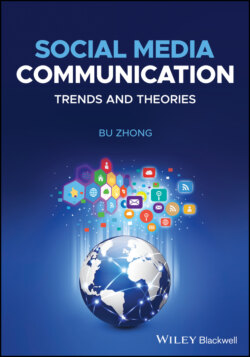Читать книгу Social Media Communication - Bu Zhong - Страница 13
Adoption Models of Media Technologies
ОглавлениеDigital media technology, also known as information and communication technology (ICT), has a different adoption model from traditional media technologies used for manufacturing televisions, land-line phones, or boomboxes. Late users of devices powered by traditional media technology can easily catch up with early users. This means that late users can use tech products as well as early users. When a user gets a TV set a couple of years after neighbors, it is possible to learn how to use the TV remote control within a day or two and begin to use it as well as the neighbors. The same results can apply to using a land-line phone or a boombox.
However, it can be dramatically different in terms of using ICT applications like the internet, social media, or a smartphone. The early and late users of ICT applications may always have a gap between them. Think about it. Do you think your grandparents could use the internet or their smartphone as well as you can? When they increase their level of using digital media technologies, you will not always stop at the same level and, quite likely, you will have reached a higher stage. This makes it difficult for any late adopters, like your grandparents, to catch up with most early users.
As shown in Figure 1.1, A and B are early and late users of ICT. When early user A starts to use ICT applications, A’s technology level will keep going up, making B, a late user, hard to catch up. Thus, the technology levels between A and B may have a gap all the time. As for C and D, who are the users of traditional media technologies, their technology levels may easily merge at some point. This indicates that one can press the buttons of a TV remote control or a telephone as well as the other. The lesson is simple. No one can afford waiting for a long time to learn new digital technologies. Any delay could make someone a late user who would eventually have a difficult, if not impossible, time catching up with early users.
Figure 1.1 Adoption models of traditional media technology and information and communication technology (illustration by Moxin Qian).
Unlike traditional media technologies used in radio and television, social media became a global phenomenon as soon as they were developed. Both radio and television were first adopted in developed countries and then spread to developing countries. For example, color television was introduced to the United States in the 1950s, but it did not go to China until late 1970, where color television became a vmass medium in the 1980s. As social media sites were developed, they immediately won internet users around the world, making it a global phenomenon in a very short time (see Figure 1.2).
Figure 1.2 Social media are a global phenomenon (Illustration by Moxin Qian).9
Today, social media are already everywhere around us and no one can afford the consequences of delaying the learning process. At this moment, if anyone asks, “Why study social media?”
It’s the social media, stupid!
